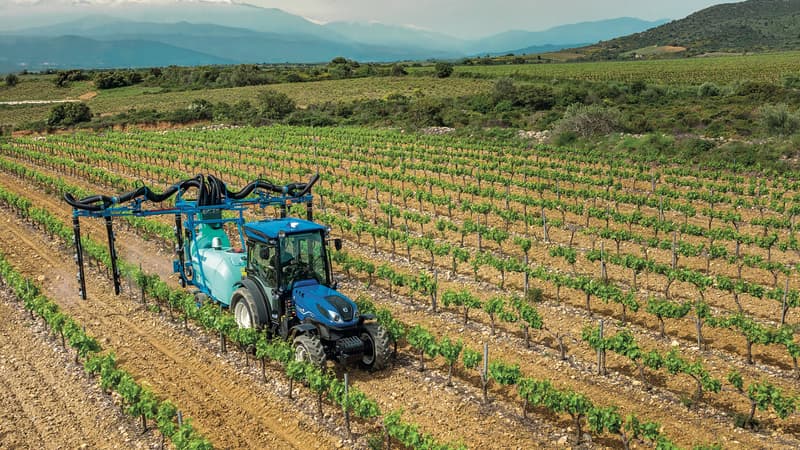“Our automated systems offer real precision when adapting to the height of the vines, to the different soils and to the harvesting conditions”, specifies Scott Wine, head of CNH during the presentation of the latest grape harvester from the American giant in Phoenix in the United States. Last December.
In fact, France is not left out. France produces almost all of these machines in the world and provides 99% of exports worldwide. Today, two thirds of the French vineyard is harvested mechanically in this way. And the CNH machine, purely “made in France”, precisely in Coëx, in the Vendée, is sold in 30 countries.
The latest, the New Holland Braud machine, presented in Phoenix, is equipped with 3D cameras that detect its surroundings 33 times per second and allow the row of vines to be digitally reconstructed, to better guide the machine, without the need for a GPS signal.
“The vines are harvested and shaken, then the grains are transported with a waterwheel, the leaves and branches are ejected, the grains are collected in the container,” explains Thierry Le Briquer. Shake, transport, extraction, transfer to a destemmer, the machine does it all.
“Mechanization is hard to miss”
All of this frees up time for the machine operator to concentrate on other settings. Thus, a machine replaces 40 to 50 collectors.
To respond to a global market, the machine adapts to the size of the vines. “We classify the vines into four categories: narrow, intermediate, wide, extra wide. For each type of vine, there are differences in height, width and length”, specifies Thierry Le Briquier.
With its products, CNH targets three types of customers: agricultural entrepreneurs who invest in major machinery, large American customers who manage large tracts of vineyards, especially in the United States. But also small French owners who produce appellation wine.
Jérôme Vic is one of those French viticulturists who have chosen to use a grape harvester. His Preignes le Vieux estate, located between Béziers and Agde, has 340 hectares of vineyards and lists 23 different grape varieties. He invested four years ago in a CNH machine: the New Holland 950 L. “Today it’s hard to miss mechanization,” he testifies.
In this operator, the machines represent approximately 40% of their investments. “We don’t really have a choice, we have to be efficient at harvesting.” There are time constraints: You have 5-7 weeks to harvest your grapes.
“The use of the machine changes the taste of the wine”
But Sylvain Pataille, a Burgundy winegrower in Marsannay-la-Côte, is not of this opinion. “I like having sore hands,” he confesses with an air of amusement. Away from all harvesting machines, harvest by hand, with manual pruning shears. “It’s more accurate.” And even he plowed part of the vineyards on his horse. He started in 1999 with one hectare of vineyards and now owns almost 30. He produces 23 different wines; mainly red Burgundy and pinot. The farm has been certified organic since 2008, out of “principle and conviction”.
A trained winemaker, he approaches wine through its flavor. When the harvest has been made by a machine, he feels it. “The use of the machines is felt in the taste of the wine, it gives it a metallic and wrinkled side, there is no image to the taste”, he slices. He also points out the consequences on the price: the cost price of a wine from a machine-harvested vineyard is halved.
Although the price of his bottle is higher, he has “a refined clientele, willing to pay a little more.” Sylvain Pataille observes that nowadays the way of consuming wine has changed: the French drink less but better.
However, the winegrower did not always harvest by hand. Marsannay was one of the areas where machines multiplied in the 1970s and 1980s. When the harvest began, I did it by machine, “because we sold cheaply, then the large estates suffocated us,” he explains. And he likes to present Marsannay vintners as a “group of friends who stick together.”
If today he defends harvesting by hand, “it’s not out of snobbery. But it doesn’t make sense to work the land to run machines over it.” According to him, the main disadvantage of manual harvesting is above all the scarcity of labor. “Since the Covid we have a lot of collectors, I normally have 40 to 50 people, now it is very difficult for me to find them,” laments the winegrower.
Source: BFM TV


